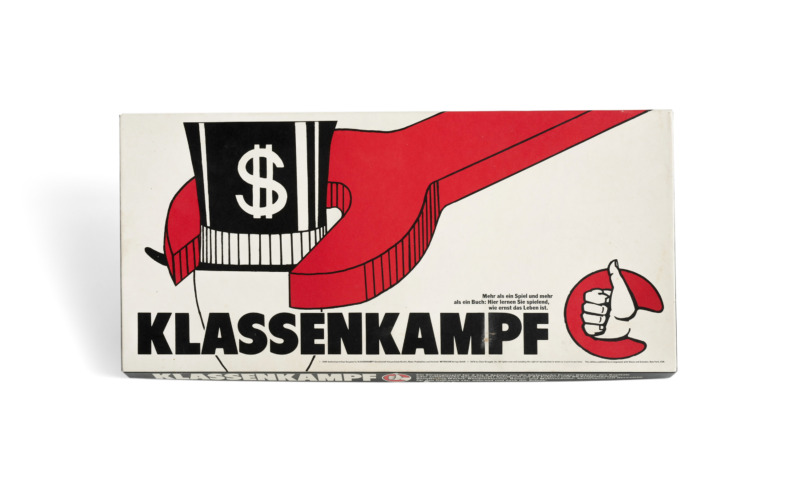The snow or smog globe made of plastic and filled with distilled water was produced in 1985 as an electoral campaign advertisement for the political party Die Grünen.
With the advertising slogan Berlin tut gut. Liste 3 = schadstofffrei! (Berlin feels good. List 3 = emission-free!) the party ran for the election of the West-Berlin House of Representatives. This slogan can be found in the smog globe as a headline floating above the architectural backdrop and as a poster on a fence bordering the industrial landscape. With its hanging pink tongue sticking out in the dusty surroundings, the Berlin bear trots through the city in the foreground, visibly finding it difficult to breathe. Instead of the white particles associated with snowflakes that are common for this kind of souvenir article, sooty particles trickle down onto the bear when shaking this ball, ironically commenting on the tragic extent of the air quality at the time. The potential sources of air pollution are hinted at as smoking factory chimneys and motorized vehicles in the background in brownish-greyish nuances.
The air pollution caused in particular by coal burning in industry and private households was countered from the 1970s to the 1990s by the mass replacement of coal stoves with lower-emission heating systems. In January 1985, during an inversion weather situation in the western Ruhr area, smog alarm of catastrophe level III was declared for the first time in Germany. Also in West Berlin, harmful sulphur dioxide levels of up to 2000 micrograms of sulphur dioxide per cubic metre of air were recorded in the districts of Wedding, Tiergarten, Kreuzberg and Charlottenburg. The number of coal-fired heating systems in Berlin has now declined considerably, but according to statistics published by the Federal Environment Agency in December 2019, the burning of fireworks releases around 4200 tonnes of particulate matter a year throughout Germany, most of it explosively on New Year’s Eve.
One of the oldest historically known snow globes was exhibited at the Paris World Fair in 1878 and showed a man with a stretched umbrella inside. At the end of the 19th century, Erwin Perzy, who came from Vienna and specialized in the manufacture of surgical instruments, was the first to patent the “glass ball with snow effect”. In Germany, only two companies produce snow globes, which despite their status as mass-produced goods are handmade.
In 1950 Adorno wrote about Walter Benjamin, probably the most famous collector of snow globes:
He was attracted to the fossilized, frozen or obsolete parts of culture, to everything in it that was deprived of its homely vitality, just as the petrefact or the plant in the herbarium appealed to the collector. Small glass spheres containing a landscape on which it snows when shaken were among his favourite utensils.
The smog globe can be seen in the permanent exhibition of the Werkbundarchiv – Museum der Dinge.

